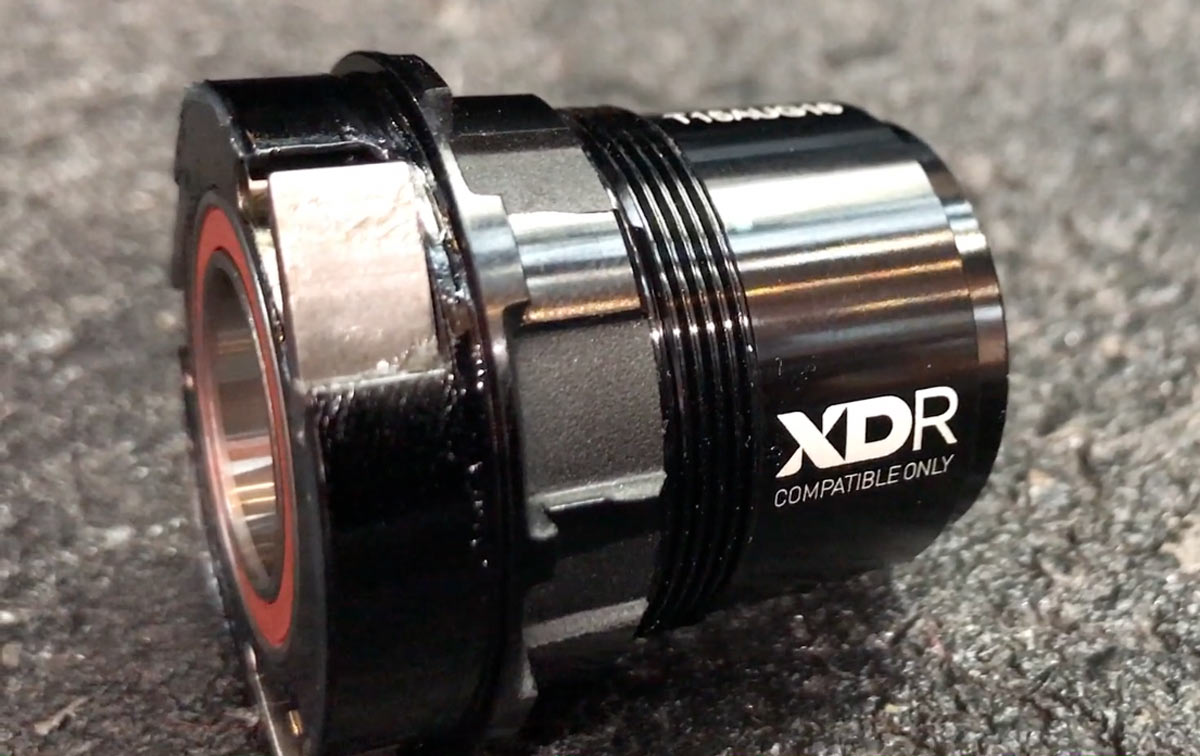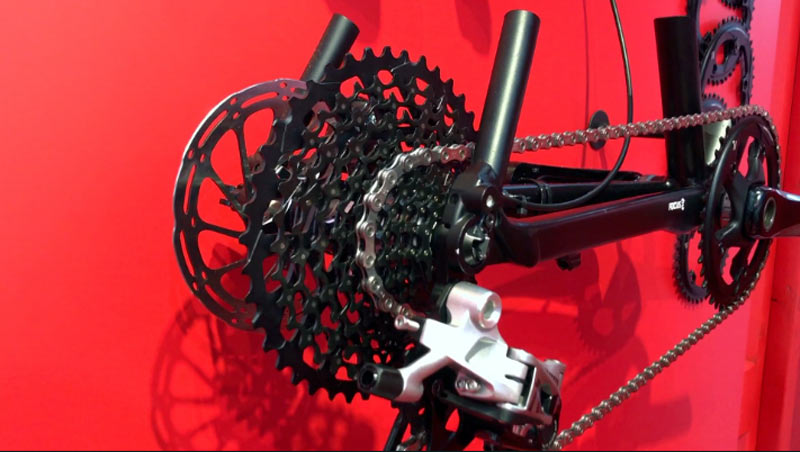SRAM quietly introduced the XDR freehub body some time ago, but really hadn’t pushed a lot of knowledge about it out into the interwebz. XDR, which stands for “XD Road”, is simply a modified version of their mountain-bike XD Driver Body that was introduced with XX1. That system was designed to allow for a wider range cassette by making room for a smaller cog than would fit on a regular freehub body.
So, why a road specific version?
If you remember back to when 11-speed road bikes became a thing, there were ample warnings (guidelines, really) that if you were going to put an 11-speed freehub body on your 10-speed wheelset, you’d probably need to re-dish the wheels. Why? Because the 11-speed body was slightly longer, which meant the wheel’s centerline was pushed slightly toward the non-drive side. Which meant your tire could sit too close to the seat- and chainstays on that side, too. There’s a full tech breakdown on this right here with diagrams to illustrate exactly what changed.
Now that all road wheels come with an 11-speed body, SRAM needed a way to make their 11-speed XD-style cassettes fit those wheels without requiring yet another re-dish. Which is quite forward looking, really, since SRAM doesn’t even make a road-specific XD cassette yet. But 3T is for their new Strada aero road bike, and that one’s designed around the XDR standard.
But, mountain bikes never really changed their freehub spacing to accommodate 11-speeds. The 10-speed versions worked because they could dish the larger cogs to follow the contour of the spokes. Because XD was designed around that 10-speed spacing, SRAM needed to make it wider to fit on 11-speed road bike wheels.
So, XDR is 1.8mm wider than XD. To use an XD cassette on XDR, you need a 1.8mm spacer on the back of the cassette. And it doesn’t take much to imagine that space being better used for a 12th cog in the near future.

